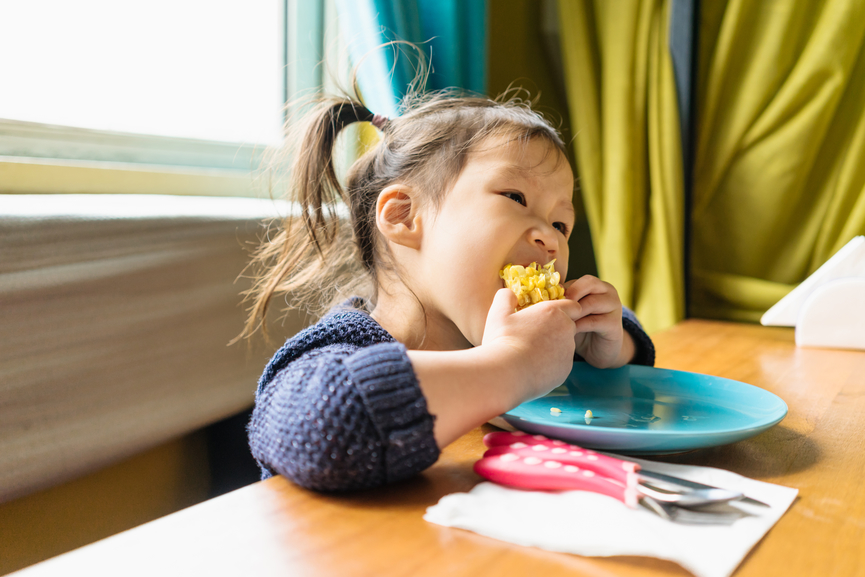How to Correctly Store Baby Food
Storing your baby’s food correctly is important to ensure that it is safe for them to eat. If it is ...
Read MoreImportant notice to customers — product packaging changesLearn More
NEW FOOD PACKAGING IN STORE NOW
From August 2018, customers will notice our rebranded food packaging start to appear on shelf in all major stockists.
 CURRENT Packaging
CURRENT Packaging

 new Packaging
new Packaging
We are excited to announce our new packaging will start to appear on shelf from August 2018. This transition to new packaging will occur over a number of months. During this time there will be a mix of current and new packaging on shelf.
There are no major changes to these products, in some instances there is a small name change or slight recipe improvement, see below for the full details.
Products purchased via the website will be delivered to customers in our old packaging until the end of October. From November, products ordered from the website will be delivered in the new packaging.
Please note, our Infant Formula packaging will not be rebranded until later in 2019.
For any questions, connect with our team of accredited practising Dietitians on +61 3 6332 9200
Product name changes
 CURRENT Packaging
Organic Baby Rice
CURRENT Packaging
Organic Baby Rice

 NEW Packaging
Organic Rice with Prebiotic (GOS)
Note: Our Baby Rice recipe has been upgraded to now include GOS Prebiotic
NEW Packaging
Organic Rice with Prebiotic (GOS)
Note: Our Baby Rice recipe has been upgraded to now include GOS Prebiotic
 CURRENT Packaging
Organic Vanilla Rice Custard
CURRENT Packaging
Organic Vanilla Rice Custard

 NEW Packaging
Organic Milk & Vanilla Baby Rice
NEW Packaging
Organic Milk & Vanilla Baby Rice
 CURRENT Packaging
Organic Apple & Cinnamon Porridge
CURRENT Packaging
Organic Apple & Cinnamon Porridge

 NEW Packaging
Organic Apple & Cinnamon Baby Porridge
NEW Packaging
Organic Apple & Cinnamon Baby Porridge
 CURRENT Packaging
Organic Banana, Pear & Mango
CURRENT Packaging
Organic Banana, Pear & Mango

 New Packaging
Organic Banana, Pear, Apple & Mango
New Packaging
Organic Banana, Pear, Apple & Mango
 CURRENT Packaging
Organic Mango, Blueberry & Apple
CURRENT Packaging
Organic Mango, Blueberry & Apple

 New Packaging
Organic Blueberry, Mango & Apple
New Packaging
Organic Blueberry, Mango & Apple
 CURRENT Packaging
Organic Peach & Apple
CURRENT Packaging
Organic Peach & Apple

 New Packaging
Organic Grape, Apple & Peach
New Packaging
Organic Grape, Apple & Peach
 CURRENT Packaging
Organic Pumpkin & Tomato Risotto
CURRENT Packaging
Organic Pumpkin & Tomato Risotto

 New Packaging
Organic Pumpkin, Sweet Potato & Tomato
New Packaging
Organic Pumpkin, Sweet Potato & Tomato
 CURRENT Packaging
Organic Broccoli, Beef & Brown Rice
CURRENT Packaging
Organic Broccoli, Beef & Brown Rice

 New Packaging
Organic Beef & Vegetables
New Packaging
Organic Beef & Vegetables
 CURRENT Packaging
Organic Milk Rusks Toothiepegs
CURRENT Packaging
Organic Milk Rusks Toothiepegs

 New Packaging
Organic Milk Rusks
New Packaging
Organic Milk Rusks

I have good news for you. It is completely normal for small children to not love vegetables (at least to begin with). And while we should be encouraging healthy eating at a young age, we also need to best realistic and and rethink the way we position healthy food to our kids.
Firstly, as parents, we need to consider what foods we’re teaching our kids to like. Think about it. Many parents often reward with lollies and party foods on a daily basis; we teach them that they will get dessert if they eat their dinner. When they behave well we hand out sweet treats and take these away when they are not so good. It is our habit of craving and treating ourselves with sweet foods that basically infers that the rather bland tasting vegetables are inferior.
It is also crucial to remember that kids, small kids in particular, do not need a lot of food. This is in contrast to our belief that they always need more, and that heaven forbid they are not eating enough. So, when we offer young children a couple of kids sized yoghurt treats with some juice, when they turn away their vegetables at the end of a long day, it is most likely because they are not that hungry (and probably very tired).
So rather than obsess about what veges your child is or is not eating, change the focus and most importantly lower your expectations. Your child may not sit down happily to a plate of boiled carrots and peas, but they many munch on some baby tomatoes or cucumbers through the day. They may enjoy your spaghetti sauce which unbeknownst to them contains a few cups of vegetables. And they may really like your special mummy juice, in which you throw some extra kale or spinach. As long as they are eating a couple of different vegetables in some form each day, you have nothing to worry about.
As a rule of parenting thumb, what you focus on will continue. This means that if you repeatedly emphasise what your child is not eating, chances are, they will keep on not eating it. Instead, try very hard to not talk about food at all. Serve your regular meals or special mummy juice and give reward and praise when good foods, including veges are eaten. And most importantly, speak about veges as you would any other food otherwise you are subtlety teaching them that ice cream is much better than the carrots you really want them to eat.